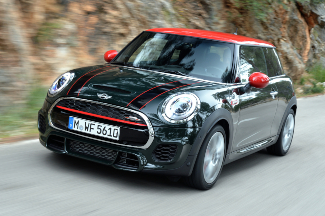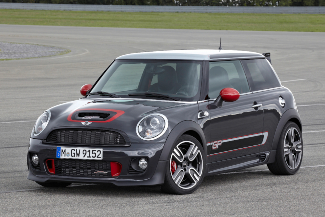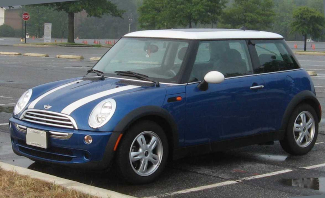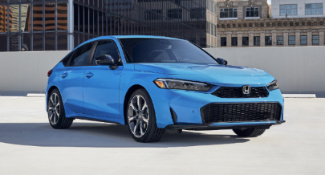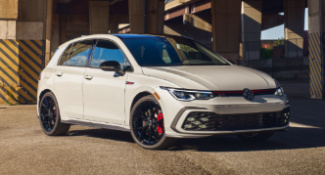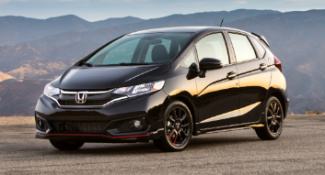Top Questions About the MINI Cooper:
1. Is the MINI Cooper made by BMW?
Yes, the MINI Cooper is made by BMW. The German manufacturer acquired the MINI brand in 1994 and has since been responsible for its development, engineering, and production. Under BMW's ownership, the MINI brand has retained its distinctive British design and charm, while benefiting from BMW's engineering expertise, particularly in terms of performance, technology, and build quality.
2. Is a MINI Cooper a reliable car?
The MINI Cooper is generally considered to be a reliable car, but that can vary depending on the model year and specific trim. Earlier models had some issues with reliability, particularly related to the transmission and electrical systems. However, BMW has made significant improvements over the years, and newer models tend to be more dependable. Routine maintenance is key to keeping a MINI Cooper running smoothly, as they can require more attention than some other compact cars.
3. How long will a MINI Cooper last?
A MINI Cooper can last well over 150,000 miles, and many owners report reaching 200,000 miles or more with proper maintenance. The longevity of a MINI Cooper largely depends on how well it has been maintained, with regular oil changes, timely replacement of wear-and-tear items, and attention to any mechanical issues being essential for extending the life of the car. The quality of parts and build under BMW’s management also contributes to its potential for a long lifespan.
4. Is MINI Cooper high maintenance?
The MINI Cooper can be considered high maintenance compared to some other small cars. It has a reputation for needing repairs more frequently and higher costs for parts and labor, particularly due to its European origin. However, this is balanced by the car's performance, design, and the driving experience. Owners who keep up with regular maintenance and address issues promptly tend to have fewer unexpected problems.
MINI is a British automotive marque originally founded in 1969. The British Motor Corporation produced the Mini Hatchback or Austin Mini. BMW, the new owner of the brand, relaunched the car in 2002 and resurrected the iconic MINI Cooper. The reborn version was immediately popular with U.S. buyers, and BMW MINI quickly expanded the Cooper model lineup to include numerous variants and body styles, including the Countryman and Clubman models.
The small car began as a front-wheel drive, two-door hatchback, while the convertible, roadster, and all-wheel drive crossover variants followed in later years. In addition to its fun-to-drive nature, the “new MINI” has retained the style and array of customization options that the classic Mini had with a modern twist.
2025 - Present MINI Cooper (4th Generation)
MINI redesigned the Cooper two-door and four-door models for the 2025 model year. Both are slightly wider than the previous-generation, and neither stray from the retro-modern styling that has made the Cooper a hit since its Introduction to America in 2002. Most improvements are hidden under the hood and inside the cabin, but none ruin the car’s attitude or allure.
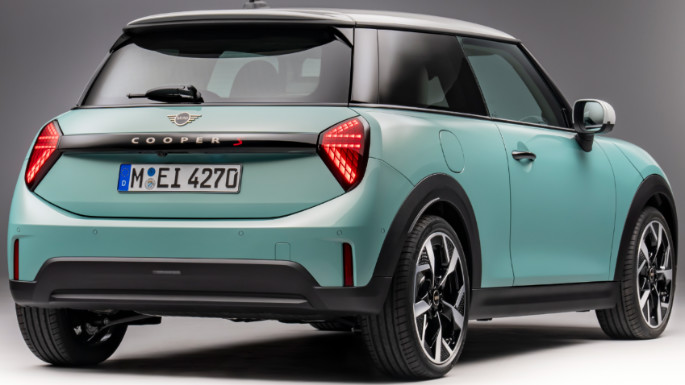
A turbocharged 2.0-liter four-cylinder engine replaced the three-cylinder engine from the previous base model, but it came standard in the now-base model Cooper and the Cooper S. In its standard form, it produced 161 horsepower and 184 lb-ft of torque, while the Cooper S model benefits from a bit more beef: 201 horses and 221 lb-ft of torque. Four-door models were available in Cooper S trim only.
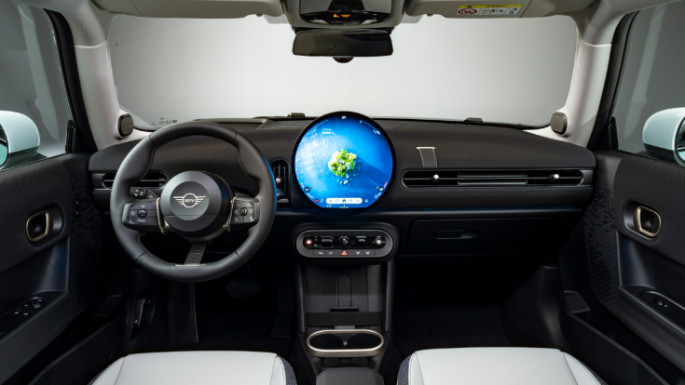
A manual transmission was no longer available as of the 2025 model year. In its place is a speedy seven-speed dual-clutch automatic that propelled the zippiest Cooper to 60mph in just over six seconds. Like Cooper models of the past, this version featured excellent handling, even without the extra oomph that the Cooper S model provides and the car’s standard front-wheel drive layout.
Signature, Signature Plus, and Iconic trim levels were available on each Cooper model. Signature models came standard with features such as 17-inch wheels, a 9.4-inch OLED touchscreen, Apple CarPlay, Android Auto, LED headlights, heated front seats, a heated steering wheel, automatic emergency braking, lane-keep assist, and a parking assistance system.
Upgrading to the Signature Plus model added equipment such as blind-spot monitoring, an active driving assistant, more customization options, and a Comfort package. The top-tier Iconic trim brought power-operated front seats, navigation with augmented reality, and a Harman Kardon premium sound system.
The Signature Plus or Iconic trim levels offered two styles. “Classic Style” featured a two-tone paint scheme with Piano Black exterior accents, a grey headliner, and sport seats. “Favoured Style” is less sporty and comes without the Piano Black trim. In its place were Vibrant Silver exterior accents, an anthracite black headliner, and sport seats out of the John Cooper Works model.
It should be noted that while a John Cooper Works model is anticipated in the coming months, that model has not officially been released and is not currently available for pre-order or purchase.
2014 - 2024 MINI Cooper (3rd Generation)
MINI pulled a fast one for its third generation in 2014, when it released a newly redesigned Mini Cooper hardtop without fully redesigning the Cooper convertible. Also called the MINI Cooper hatchback, the redesigned third-generation Cooper hardtop looked much the same as the previous generation, but, a pair of new engines and a more refined interior kept the Cooper fresh.
Standard Cooper models came with a 1.5-liter three-cylinder engine that produced 134 horsepower. Cooper S models received a peppier 2.0-liter turbo with 189 horsepower. A six-speed manual transmission was standard on both models, but a six-speed automatic transmission could be fitted in its place.
Convertibles continued to use the 1.6-liter four-cylinder from the previous model years. Entry-level versions produced 121 horsepower, Cooper S models gained a turbocharger that boosted power to 181 horses, and John Cooper Works models used the same turbo setup but received 208 horsepower.
The Cooper was nearly an inch taller than its predecessor and 4.5 inches longer, improving both passenger and cargo space. Despite the added girth, the Cooper still only came with a 98.2-inch wheelbase, 8.7 cubic feet of cargo space behind the rear seats, and 38 total cubic feet of cargo space, making it one of the smallest new cars on sale in the U.S.A.
Standard equipment with the Cooper hatchback included a six-speaker audio system, cruise control, air conditioning, Bluetooth, leatherette upholstery, 15-inch wheels, side curtain airbags, and ABS. Cooper S models get additional features such as foglights and sport seats. Optional equipment includes LED headlights, leather upholstery, and a dual-pane sunroof.
While the Cooper convertible continued without a full redesign for the 2015 model year, MINI re-introduced the John Cooper Works trim to the hatchback lineup and added a four-door model to complement the existing two-door hardtop. The convertible finally caught up with the rest of the lineup and was redesigned to match the updated hardtop body style for the 2016 model year.
Minor changes were introduced for 2017, including a standard 6.5-inch infotainment screen and smartphone app integration for hardtop models. Selectable drive modes were removed from the standard equipment list, and a MINI Seven special edition was offered. Finally, four new body colors became available: Pepper White, Midnight Black, British Racing Green, and Lapisluxury Blue.
Rear parking sensors and a rearview camera were standard equipment from 2018 – a year before MINI made some more substantial changes to the Cooper lineup, as 2019 models featured some minor exterior updates and major infotainment system updates. Wireless Apple CarPlay and Android Auto were available for the first time, and the Cooper’s infotainment system benefitted from a new interface.
A new all-electric MINI Cooper SE was added to the lineup in 2020 to compete with the increasing crop of EVs on the market. Its electric powertrain produced 181 horsepower, it had an estimated range of 110 miles, and it was one of the cheapest EVs on sale at the time. That same year also brought a seven-speed dual-clutch automatic transmission to the standard and Cooper S models, while the JCW got an eight-speed automatic transmission.
Enthusiasts got their six-speed manual transmission back for 2021. A limited edition JCW GP model with 301 horsepower was offered to 3,000 buyers lucky enough to get their hands on one. It still featured the Cooper’s standard front-wheel drive layout, but it came with fender flares and a huge rear spoiler.
The 2022 Cooper received a larger grille, a new lower front fascia, and other minor styling tweaks. Additional colors were added to the options list, including Rooftop Grey, Island Blue, and Zesty Yellow. A Brick Lane special edition model was also made available to buyers who wanted features such as heated black leather sport seats, a Nappa Leather-wrapped steering wheel, and a Harman Kardon audio system.
Only a handful of minor updates were brought to the MINI Cooper’s lineup for 2023 and 2024 as the theird-generation Cooper hit its decade-old mark.
2007 - 2013 MINI Cooper (2nd Generation)
The second-generation MINI Cooper hatchback may not have looked much different from the first, but a completely new range of engines and a slight design tweak differentiated it from the outgoing model. It debuted in showrooms in 2007 with a revised interior and slightly larger dimensions than the outgoing model. The MINI Cooper Convertible carried over into 2007 unchanged from the previous model year.
Standard hatchback models received a new 1.6-liter four-cylinder engine that produced 118 horsepower and 114 lb-ft of torque. Cooper S models also used a 1.6-liter engine, but it worked with a turbo to produce 172 horsepower and 177 lb-ft of torque. Both engines came standard with a six-speed manual transmission, but a six-speed automatic gearbox was optional. All Cooper models were front-wheel drive.
Standard features on entry-level Cooper hatchbacks included ABS, leatherette upholstery, a six-speaker audio system, and air conditioning. S models received the beefier powertrain plus upgrades such as tuned suspension, sport seats, performance tires, and a leather-wrapped steering wheel.
MINI expanded the Cooper lineup to include the Cooper Clubman model in 2008. The MINI Clubman featured a longer wheelbase that made the rear seats more passenger-friendly, a rear-hinged passenger door, and some additional cargo space that made it more practical than the standard Cooper models. Importantly, it shared the same retro styling as the regular Cooper hatch.
The Mini Cooper Convertible was finally redesigned for the 2009 model year, bringing it into alignment with the Mini Hatch that had been redesigned two years prior. It received the same small styling updates as the hatchback and both the standard and the supercharged engines from the first-generation Cooper models were replaced with the updated powertrains that came with the second-generation hatchback’s redesign.
In addition to the convertible’s redesign, Mini added a high-performance John Cooper Works trim to the standard Cooper lineup. It utilized the same turbocharged engine as the Mini Cooper S, but was tuned to produce 208 horsepower. Brembo brakes and 17-inch wheels were standard.
Camden and Mayfair special edition packages were added to the options list for 2010, before more substantial changes made their way to the lineup for 2011. In addition to mild exterior styling updates, the Cooper’s base engine was tweaked to produce a healthier 121 horsepower. Cooper S models likewise benefitted from an increase to 181 horsepower, while JCW models retained their already substantial output of 208 horsepower.
Other minor adjustments such as steering modifications, revised audio controls and additional sound insulation made the Cooper slightly more refined. Its lack of widespread changes helped it retain its charm, so the introduction of a new crossover variant, called the Mini Countryman, effectively expanded BMW MINI’s demographic without compromising the flagship model’s effectiveness.
Yet another variant was introduced to the Cooper lineup for the 2012 model year. The MINI Cooper Roadster offered much the same driving experience as the standard Cooper convertible, but with a more stylish roofline, a little more cargo space, and a focus on simplicity. It was offered with the same powertrains and trim levels as the rest of the Cooper lineup.
Only a few additional features were added to the options list for the 2012 Cooper lineup, followed by much the same in 2013. Bluetooth was added as standard in 2013 before the Cooper hatch was redesigned the following year.
An additional variant called the MINI Paceman was added to the automaker’s portfolio for 2013. It gave buyers a glimpse into the Cooper’s upcoming redesign and added yet another wing to the manufacturer's demographic reach in the form of a coupe.
2002 - 2006 MINI Cooper (1st Generation)
The reincarnated first-generation "new MINI" debuted in America for the 2002 model year. Its two-door hatchback body style was easy to recognize, thanks to its retro-inspired design inspired by the original British model. It was much larger than the classic MINI Cooper but still small by new car standards of the time.
Two trim levels were available: the base Cooper featured a 1.6-liter Tritec four-cylinder engine that produced 115 horsepower and 110 lb-ft of torque, which wasn't much, but neither was its 3,200-pound curb weight, so it was nimble and fun to drive.
A more powerful Cooper S model was also available if the base model’s appeal just wasn't enough. It featured the same 1.6-liter engine assisted by a supercharger, and pumped out 163 horsepower and 162 lb-ft of torque. Base models came standard with a five-speed manual transmission and S models came with a six-speed manual gearbox. A CVT was available in place of the five-speed gearbox in the base model.
Each model came with four-wheel ABS, an Electronic Brake Distribution system, air conditioning, manually adjustable front seats, a TPMS system, and side-impact airbags. Cooper S models came with additional goodies such as performance tires and a leather-wrapped steering wheel. Optional extras included cruise control, a sunroof, and leather upholstery.
A few minor additions and interior and exterior paint colors were added in 2003 and 2004 before a facelift in 2005. Exterior styling changes were subtle but kept the Cooper modern and fresh. Another thing that kept it fresh was the addition of a convertible model in both base and S trims.
Cooper S models received a five-horsepower bump, both manual transmissions were updated to feature shorter gearing and quicker acceleration, and a six-speed automatic transmission was added to the options list for the Cooper S.
Along with a few minor updates for standard models, 2006 brought a high-performance John Cooper Works version. It featured the same supercharged 1.6-liter engine setup and front-wheel drive layout as the S model, producing 214 horsepower. Additionally, a Checkmate package that came with HID headlights, foglight, extra trim enhancements, and special wheels was made available.

